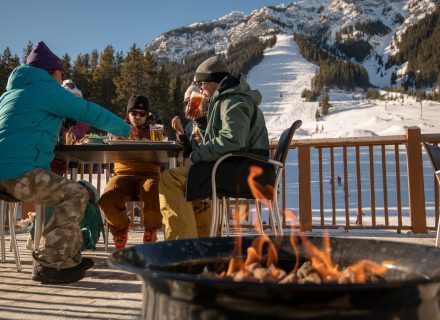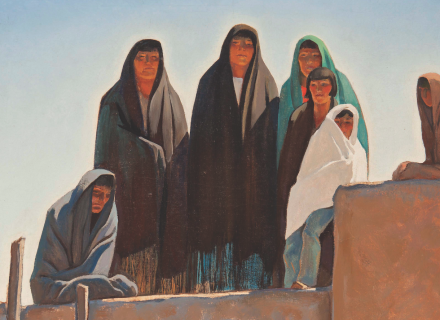Before becoming an artist, Arizona-based Gerry Quotskuyva (Hopi, Yaqui) put his knife skills to work as a chef, preparing food for celebrities and on movie locations, including a “grueling but gratifying” gig on Clint Eastwood’s Heartbreak Ridge. Those skills also came in handy when he worked as an ice carver. All that honing of his handiness with a blade led him to discover his path to becoming a carver. For 26 years, he has followed that path and continues to explore other expressions of his creativity.
“When I started carving, some of my works came from dreams, and those became my contemporary, interpretive pieces,” says Quotskuyva, who currently resides in Rimrock, Arizona, where he practices the Hopi way of life. Collectors became aware of his work (several dozen of them own 20-plus of his katsina dolls), as did organizations interested in Native arts that were modern, including the Eiteljorg Museum, which has 25 of his pieces.
For Quotskuyva, art is a spiritual path, and carving is like a meditation. “Hopi artists, as with many Native artists doing traditional works, have to venture out into the beauty of our planet to find the material for their pieces,” he says. But that undertaking can be perilous: “I have had many experiences regarding snakes, connecting with Mother Earth through the landscapes and wildlife, or even the geographical conditions one endures in finding materials. The closest I’ve come to a bad experience, even though the story is fun to tell, is almost sliding off the edge of a cliff at about 75 feet in the air. So the background of our experiences can be the more interesting part of our creations.”
By tradition, carving katsinas is to be done with the roots of cottonwood trees — Quotskuyva is presently at work on a massive piece called Gnarly Root using an ancient cottonwood root. “You might say [using cottonwood] is an edict. As a rule of thumb, the roots of a tree mirror the tree itself, so it grows deep into the ground with many branches reaching out to soak in the moisture of the earth. To me, the roots also gather the spirit of the earth, and it is our job as Hopi carvers to bring the root back to life, reflecting the spiritual beings of Hopi.”
Most of Quotskuyva’s wood comes from around the Verde Valley of Northern Arizona. “Most carvers are secretive about where they find the wood, because it is becoming scarce,” he says. “We like to find the driftwood that comes about from the harsher storms. The other reason for the preference of driftwood is to protect the live trees.”
Hopi cultural practices and being surrounded by unique pieces of wood in his studio inspire him to create. “Sometimes, I have no idea what I want to do with a piece of wood, so it sits in the studio,” Quotskuyva says. “Then bang! One day I look at the root and it tells me what it wants to be. Sometimes it occurs when I am actually working on the piece, as if it shows its form as I carve. You never know — as an artist, you just have to be open to the messages.”
The Art of Gerry Quotskuyva is on view through April 19 at Amerind Museum in Dragoon, Arizona (amerind.org). You can also find his work at the Heard Museum Guild Indian Fair & Market (March 7 – 8) in Phoenix; the Sharlot Hall Museum show (July 12) in Prescott, Arizona; Santa Fe Indian Market (August 15 – 16); and the Museum of Northern Arizona’s Hopi Festival of Arts & Culture (July 4 – 5) in Flagstaff, Arizona. gquotskuyva.com
Photography: Images courtesy Michael Thompson and Gerry Quotskuyva
From our April 2020 issue.




















